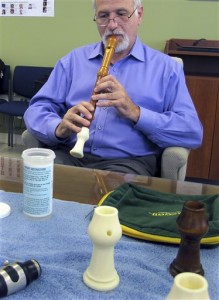3D Printing Harmonizes With Music History
Latest News
August 20, 2014
For me, one of the most exciting things about 3D printing is the potential to create copies or new replacement parts for old, discontinued items. You could print copies of unique buttons for a vintage shirt, parts for an old car, or replacement pieces for a broken toy.
Connecticut researchers are applying scanning and 3D printing to help make product parts for rare, fragile, and very old musical instruments that could not only help make it easier to actually play them, but could provide a better understanding of how classical compositions were actually meant to sound at the time they were composed.
The project was proposed by Dr. Robert Howe, a reproductive endocrinologist in Massachusetts who also happens to be a doctoral student in music theory and history at the University of Connecticut. Howe was familiar with using CT scanning, and thought that the same technology could be used to study fragile musical instruments.
Collaborating with faculty in the music and mechanical engineering departments, Howe and the researchers developed a way to use CT scanning to make images of instruments and to print 3D copies of parts.
Studying rare antique instruments has always been limited by the fact that they can’t be pulled apart to examine their innards, and by the limitations of X-ray technology. Using the CT scanning process the group developed (which allows the scanning of metal and wood simultaneously) eliminates the risk of damage, and is much more revealing. An 18th-century English horn, for example, was scanned and found to include a more complicated construction than was suspected.
The group was also able to produce an exact replica of one of the original mouthpieces designed by Adolphe Sax for a 19th century saxophone. In the past, doing so would have required using calipers (which could damage the original mouthpiece) or using ill-fitting modern mouthpieces. The 3D printed replica was produced for around $18 in a fraction of the time it would have taken using manual methods.
The technology could eventually be used to create copies of entire instruments.
Source: CBS
Subscribe to our FREE magazine, FREE email newsletters or both!
Latest News
About the Author
Brian Albright is the editorial director of Digital Engineering. Contact him at [email protected].
Follow DE






